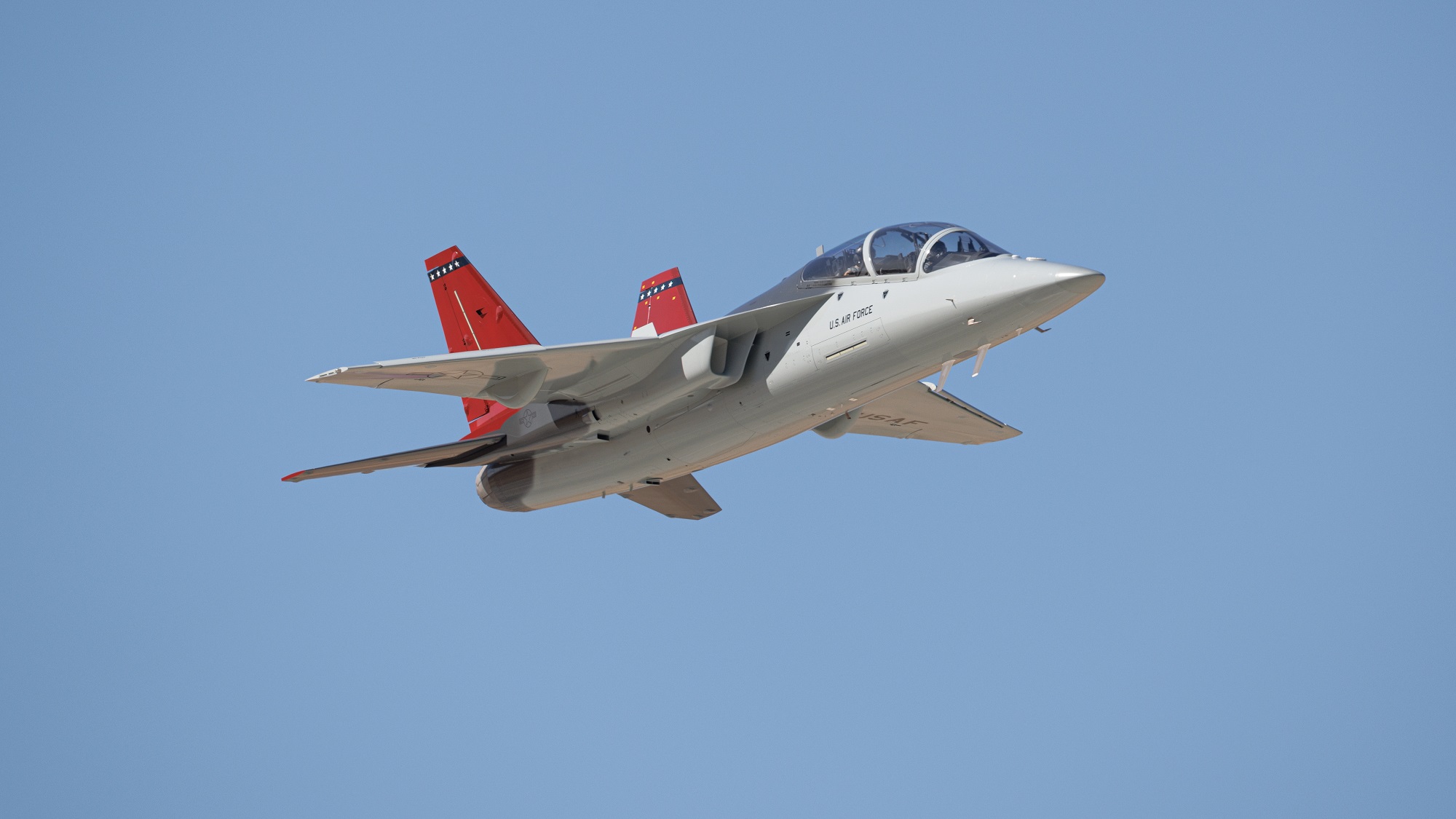T-7A RedHawk: Boeing completes delivery of last EMD prototype to USAF
Boeing has delivered the final advanced training aircraft T-7A RedHawk EMD (Engineering and Manufacturing Development), designated APT-5, to the United States Air Force (USAF). This aircraft will join the T-7A test fleet at Edwards Air Force Base to continue assessing its capabilities ahead of the Milestone C approval and the Low-Rate Initial Production (LRIP) contract. Initially expected to be signed this year, the contract will most likely be finalized in 2025.
The first of the five T-7A EMD aircraft was delivered to Edwards Air Force Base in November 2023, followed shortly by the arrival of two more aircraft. According to the original contract between Boeing and the USAF, prototypes 4 and 5 were to be delivered by December 2023 and January 2024, respectively. However, recurring quality control issues and supply chain disruptions delayed the program, with the APT-5 finally delivered on December 20, 2024.
The final T-7A #RedHawk engineering and manufacturing development (EMD) jet, APT-5, has been delivered to the @USAirForce.
Check out all fab five T-7A EMD jets taking off! pic.twitter.com/BVYQLvPxGW
— Boeing Defense (@BoeingDefense) December 20, 2024
T-7A RedHawk: A Technological Leap in Pilot Training
In 2018, the USAF awarded Boeing a $9.2 billion contract for 351 advanced T-7A trainers, 46 simulators, and support systems. The RedHawk will replace the aging T-38 aircraft in the Air Force’s fleet and is designed to streamline training for modern fighter aircraft such as the F-35.
According to Boeing, the T-7A will enhance pilot training in three key areas:
- Improved Ground Readiness: The advanced pilot training system incorporates high-resolution ground training systems and simulators to deliver robust, integrated live, virtual, and constructive training capabilities.
- Safety: Model-based engineering allowed extensive testing throughout the aircraft’s design and construction phases to ensure safety before its first flight. The T-7A’s ejection system is the safest among trainer aircraft.
- Mission Flexibility: With open-architecture software and fly-by-wire digital controls, the T-7A supports training for a wide variety of fighter and bomber types and can adapt to evolving technologies, threats, and training requirements.
The T-7A RedHawk promises to revolutionize pilot training for the USAF and is a strong contender for the U.S. Navy’s Undergraduate Jet Training System (UJTS) contract, which aims to replace its T-45 Goshawk trainers. However, Boeing must first demonstrate concrete progress in resolving the persistent quality control and supply chain issues that have plagued this and several of its other programs.



Para comentar, debés estar registradoPor favor, iniciá sesión